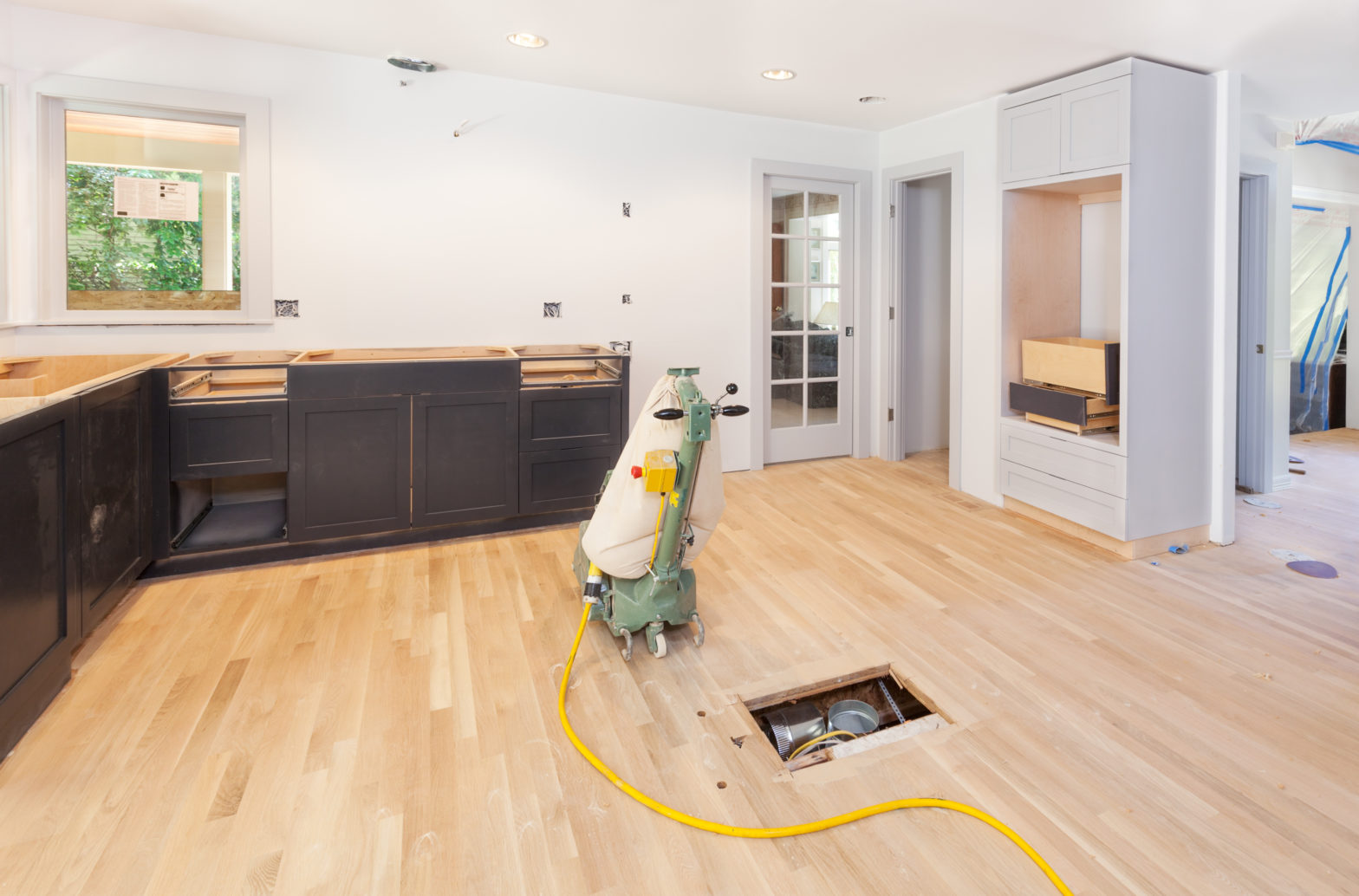Table of Contents
*This post may contain affiliate links. As an Amazon Associate we earn from qualifying purchases.
Refinishing hardwood floors is becoming more popular as more and more people are opting for hardwood flooring over carpeting and other forms of flooring.
And while some people would prefer professional take care of the flooring, others would instead do it themselves.
The reality is, refinishing hardwood floors is more time-consuming than it is complicated.
Why You May Want to Refinish Your Hardwood Floors
There are a number of reasons someone may want to refinish their hardwood floors. But before heading to the hardware store, you want to weigh the pros and cons of taking on the project.
You’ll want to check the condition of the wood and whether or not it will need more extensive repairs than just a refinishing.
Signs that you may want to refinish your hardwood floors include any wear spots, scratches surfaces, and fading. If your floors are heavily damaged, or if they have been refinished before, you may want to consult a professional because it may need to be replaced or repaired instead of refinished.
5 Steps to Refinish Your Hardwood Floors
If it has been decided that refinishing your hardwood floors is the best option, and you’ve chosen to go the DIY path, then you will want to check out the following steps because they will help guide you through the project, so you get it done right the first time.
1. The Prep Work
Like any project, getting started off on the right foot is essential and refinishing hardwood floors is no different. You are going to want to start by clearing out the room. The more furniture you can get out, the better because you won’t have to shift stuff around as you go. This will also cut down on the total time to complete the project because you can get the flood done in one go, and not have to wait for days for the floor to settle between furniture moves.
After you’ve cleaned the room out, you’ll want to clean the floor using a wood flooring cleaner. You want to remove as many impurities as you can as well as mark deep scratches in the floor because those may need extra attention later.
Finally, you’ll want to start in the corners and roughen the existing finish there and along the edges because most buffers are large and bulky. They don’t fit well up against walls and in small corners. Remember, the purpose here is to scratch up the surface.
2. Sanding the Floor
Once you are ready for the buffer, you will want to start at one wall and move backwards across the room. You will want to follow the direction of the grain and remember to keep the buffer moving at all times, so you don’t wear down any single spot more than the other. Remember, you don’t want to sand down, or through the surface, you want to scratch up the old finish.
3. Vacuum Up the Dust
After you’ve got the floor sanded, you’ll want to take a 10 to 15-minute break to let all the dust settle. Once the dust settles, you will want to take a vacuum and clean up every last bit of dust you can. Sometimes it helps to take a microfiber cloth to pick up any dust left in small cracks or between the boards.
4. Cut Along the Edges
As with any paint job, you will want to begin by cutting around the edges and keep in mind that you’ll want to do small sections at a time to avoid lap marks caused by the polyurethane drying.
5. Apply the Polyurethane
You’ll want to pour small parts at a time to the floor or use a paint tray willed with polyurethane and dip an applicator pad attached to a long handle into it as you go.
As with the edging process, you’ll want to work in small sections at a time. And you will want to overlap each pass to keep the edge wet, so there are no lap marks as you go. You will want to first go with the grain, then across it as you go.
Once the floor is covered, you will want to wait a solid three or four hours before applying the second coat. It is recommended to wait at least a week before bringing the furniture back into the room.
Refinishing Hardwood Floors Isn’t for Everyone
While refinishing hardwood floors is a big job, it is one that can be done on your own. But there are some cases when it’s better to have the professionals do it.
For instance, if the floor is heavily damaged, you are better off calling in the professionals to make sure the job is done right the first time.


